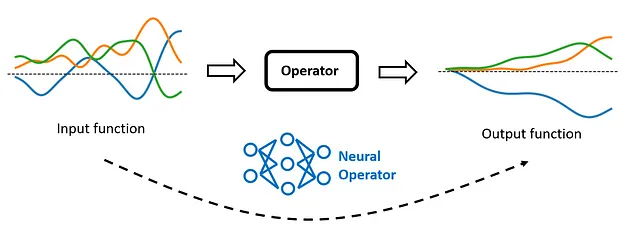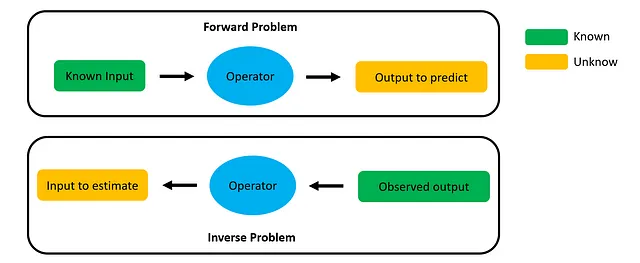具有参数估计和输入函数校准的两个案例研究
在我的上一篇博客中,我们深入探讨了物理信息DeepONet(PI-DeepONet)的概念,并探讨了为什么它特别适用于运算器学习,即从输入函数到输出函数的映射学习。我们还将理论转化为代码,并实现了一个能够准确求解常微分方程(ODE)的PI-DeepONet,即使在看不见的输入强制曲线下也能准确求解。

使用PI-DeepONet解决这些“正向”问题的能力无疑是有价值的。但是,PI-DeepONet能做的事情是否仅限于此?当然不是!
在计算科学和工程中,我们经常遇到的另一类重要问题是所谓的“逆向问题”。本质上,这类问题将信息流从输出反向到输入:输入是未知的,而输出是可观测的,任务是根据观测到的输出估计未知的输入。

正如你可能猜到的那样,PI-DeepONet也可以是解决这些类型问题的超级有用工具。在本博客中,我们将密切关注如何实现这一点。更具体地说,我们将讨论两个案例研究:一个是参数估计,另一个是输入函数校准。
本博客意在自成一体,只对物理信息(PI-)学习、DeepONet以及我们的主要关注点PI-DeepONet进行简要讨论。如需更全面地了解这些主题,请随时查看我的上一篇博客。
有了这个理解,让我们开始吧!
目录
· 1. PI-DeepONet:回顾· 2. 问题陈述· 3. 问题1:参数估计 ∘ 3.1 工作原理 ∘ 3.2 实现一个…